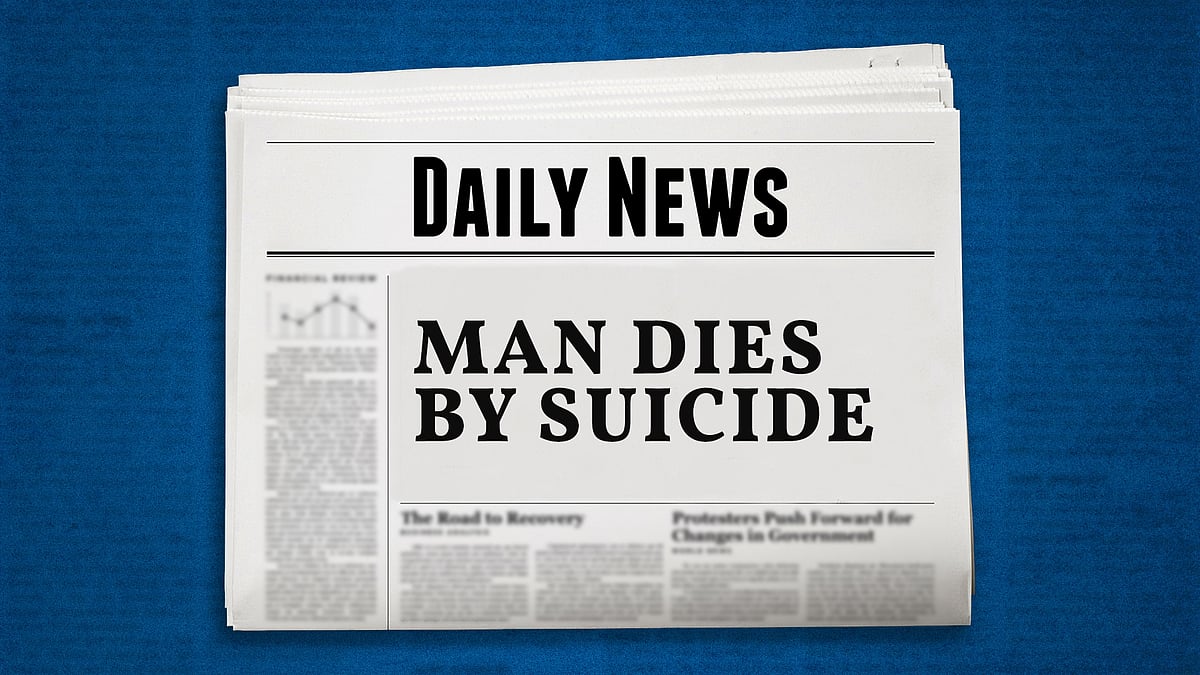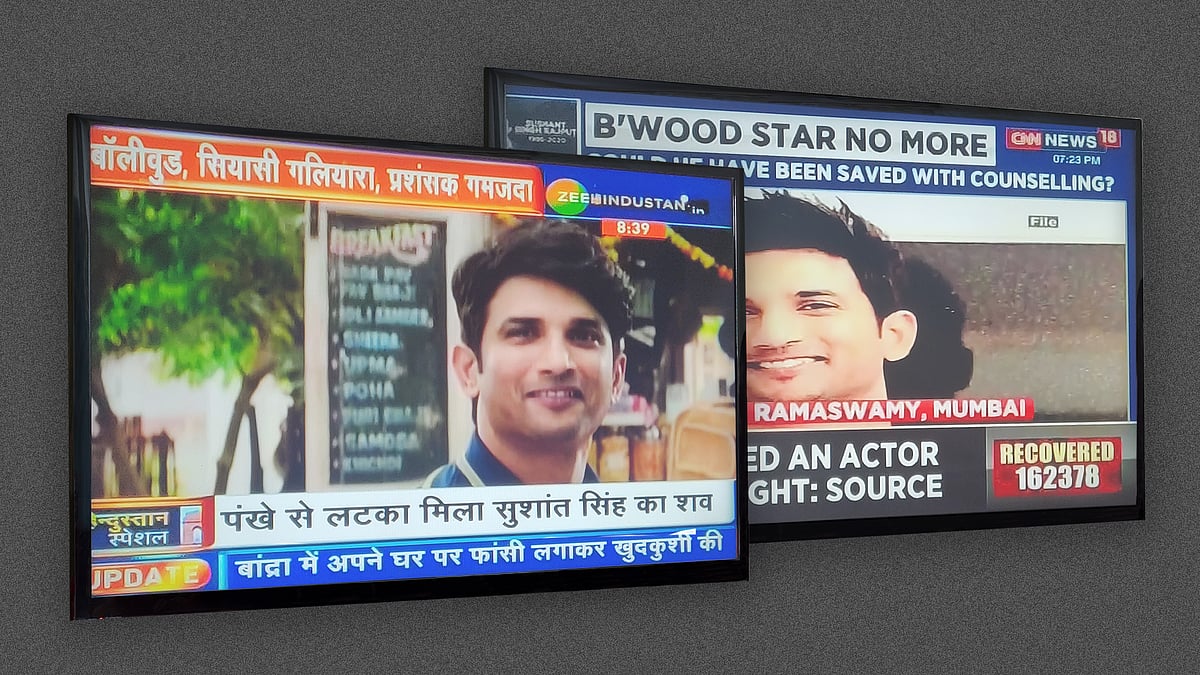Intrusive, voyeuristic, irresponsible: Analysing media coverage of Vijay Antony’s daughter’s suicide
Minors were asked if his daughter ‘looked depressed’, channels speculated on her mental health, and one channel even telecast the funeral.
“Was she a school leader?” a reporter asks, thrusting a mic at a woman who is rushing out of a funeral. She pleads with the reporter not to ask such questions, saying they are already heartbroken about the death.
But the reporter is relentless. “If she was a leader and the leader of the cultural committee, how did she make a decision like this?”
The reporter is referring to the 16-year-old daughter of Tamil actor, music composer and producer Vijay Antony. She died in the early hours of Tuesday, September 19, allegedly by suicide.
Many people called out the media nightmare that followed, which saw Tamil news channels and YouTube channels perching outside Antony’s house in Chennai. But it’s not just about insensitive coverage. These media houses ignore guidelines on reporting and are downright dangerous.
“A doctor pronounces her dead, not the news.” This is a famous line from the TV show The Newsroom, but it has resonance in Indian media circles too. Earlier this month, actor Divya Spandana was randomly pronounced dead by a few Tamil channels. She works largely in Kannada movies, but the fake news came on Tamil news first.
In this case, on September 19, a Tamil news channel said on social media platform X that Tamil music composer Vijay Antony had died. Others said that it was his younger daughter who died. In reality, it was Antony’s elder daughter who passed away by suicide.
The depravity of rushing to ‘break’ the news of a death aside, what followed was atrocious.
Camerapersons captured visuals of the bereaved parents while others sped after the ambulance that took the child’s body for post-mortem. Channels speculated on the deceased’s mental health, wondering how long she had been seeking treatment as well as other details, like her whereabouts and who she last spoke to, which TV anchors believed might have driven her to her death.
This also raises an important question – should suicide coverage be aired constantly, especially when a minor is involved?
Copycat suicides
Reporters live from Vijay Antony’s residence shared specific details including the method of suicide and the arrangement of his daughter’s room. The constant repetition of the method of suicide in the media may not only trigger those among the viewers with suicidal ideation but also could lead to ‘copycat suicides’.
Copycat suicides refer to a string of suicides that happen after a suicide is covered sensationally in the media. A 2015 study from South Korea discovered that there is a “strong association” between the media reports of celebrity suicides and the subsequent suicides that followed after excessive reportage. The paper further recommended that there needs to be more responsible and sensitive reporting of suicide.
Triggering voyeurism
Not only was this media coverage triggering, but it also felt intrusive and voyeuristic. Several titles and thumbnails of the videos uploaded to YouTube, set to moody background music, were misleading and treated the suicide of a minor as a ‘sensational’ news item that warranted constant reporting.
Camerapersons from mainstream news channels and YouTube channels tried to get shots of Vijay Antony and his wife Fatima as they left and entered their home. These videos were published immediately with clickbait titles like “Vijay Antony breaks down on seeing daughter’s body”.
A popular TV channel even covered the funeral. This channel followed the vehicle that was carrying the child's remains to a graveyard in Nungambakkam and telecast visuals of the gravesite being dug.
Even well-wishers who came to Vijay Antony’s house to express their condolences were not spared. Teachers and the deceased person's friends – who were clearly minors – were stopped by reporters. When bytes from overwhelmed attendees at a funeral are aired to pass off as confirmation about the deceased child’s general behaviour, it also amounts to reducing the scope and complexity of mental illnesses to personal trigger points.
‘Did she look depressed?’
Both mainstream TV channels and YouTube news channels asked the child's minor friends about the last time they saw her, if she ‘looked depressed’ at the time, what could have driven her to such a move, and whether she was seeking treatment for any mental health problem. Her friends answered the questions and noted that they were unaware of her mental health condition and denied that she was seeking treatment for the same.
The questions posed to her friends are dismissive of the deceased’s mental health as there is no singular way that a depressed person would look or act. Such questions further create the wrong notion that there need to be certain visible markers for a person to be deemed mentally ill. Mental health is complex, and people’s opinions about a person cannot be considered a medical diagnosis.
While it is possible that the deceased person’s friends might not have been aware of her condition at all, should they have been asked such questions at all? Though it is no fault of theirs, the responses of these minors may add fodder to the speculation about her death, possibly dismissing her mental health conditions.
Oversimplifying mental health struggles
Apart from badgering funeral-goers with questions, YouTube news channels interviewed psychologists and ‘mental health experts’ who further speculated on what could have caused the child’s death.
A popular YouTube news channel, that has been previously criticised for creating inappropriate and clickbaity content, interviewed a psychologist. She detailed what drives children to suicide and listed reasons like excessive gadget usage, having a separate room, working parents who do not spend adequate time with their children, and ‘inappropriate’ teenage relationships, among others.
Another mainstream media channel replugged an old video of Vijay Antony’s speech where he said that his father also died by suicide when he was a child and even went one step further to interview a psychologist on whether suicide can be hereditary.
While interviews are important conversations on mental health and suicide, they do more disservice than help when they fail to capture the complexities of mental health struggles. As seen in the interview, there is a blanket generalisation of teenage mental health without taking into consideration the myriad of factors that could cause one to develop mental illnesses. While the psychologist did not resort to speculating the reasons behind the 16-year-old's death, viewers of the video might be left with a poor and oversimplified understanding of mental health and teen suicides.
How to cover suicide sensitively
There are several guidelines on media reporting of suicide coverage including from the World Health Organisation. The guide mentions that news reports and videos must include working resources that can be used by suicidal people to seek help. Apart from that, one should be sensitive while interviewing the loved ones of the deceased person and should educate readers/viewers about suicide and its prevention rather than spreading myths about the same.
The WHO also provides guidelines on what not to do while reporting on suicide. The guide said that language must be sensitive and phrases like ‘died by suicide’ or ‘took his/her life’ can be used so that the deceased person’s choice is not villainised.
At the same time, WHO recommends not mentioning the method of suicide, as it might trigger people who are ideating suicide and make the methods seem more plausible to them. It is also recommended that suicide coverage not take up prominent places in a newspaper or magazine or constantly repeat stories about suicide. Sensationalist headlines should be be avoided.
Another resource prepared by the Suicide Prevention and Implementation Research Initiative says that graphic illustrations for suicide stories must be avoided. Additionally, reporting suicide as a simple issue and using words or phrases that romanticise suicide must be avoided.

Most times, a suicide story is just an individual’s story that you may report or not. In some cases, suicide is symptomatic not just of what a person is going through, but of what a society is going through, including oppressive structures like caste, gender and other discriminations, as well as targeted violence at the marginalised. Journalists and news channels have to flag the difference.
If you or someone you know is experiencing thoughts of suicide, we urge you to seek help. Please call one of the helpline numbers listed here or contact a mental health professional.
This report was republished from The News Minute as part of The News Minute-Newslaundry alliance. It has been lightly edited for style and clarity. Read about our partnership here and become a TNM Member here.
 Indian media’s representation of suicide is often inaccurate. Here’s why
Indian media’s representation of suicide is often inaccurate. Here’s why
 Media most foul: How Sushant Singh Rajput’s death was turned into a spectacle
Media most foul: How Sushant Singh Rajput’s death was turned into a spectacle
